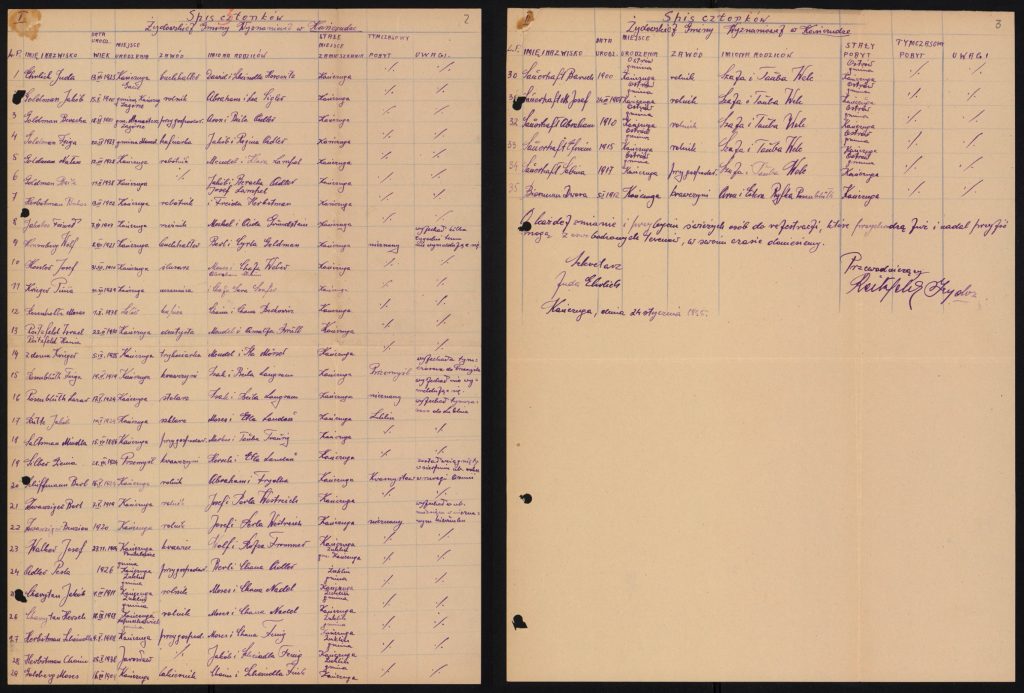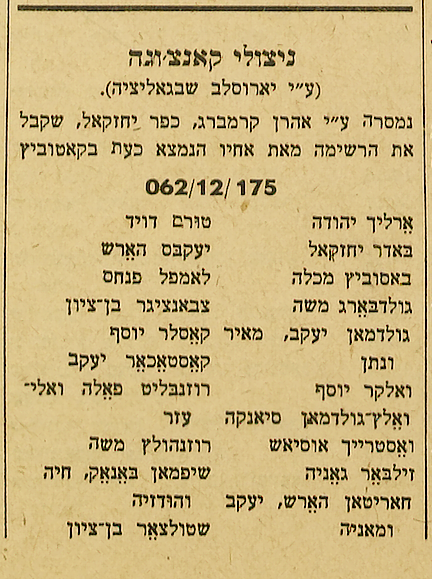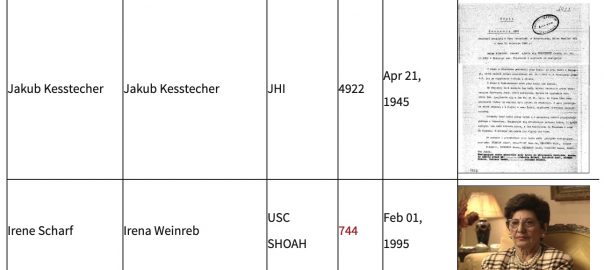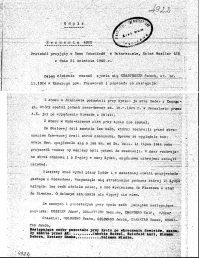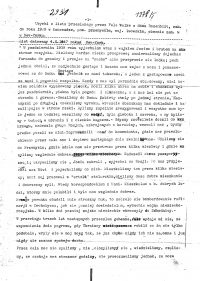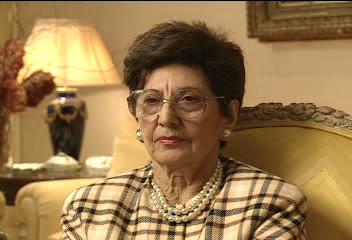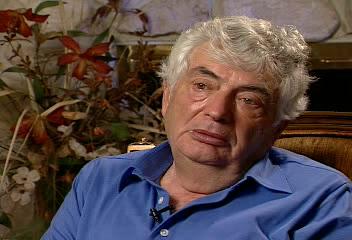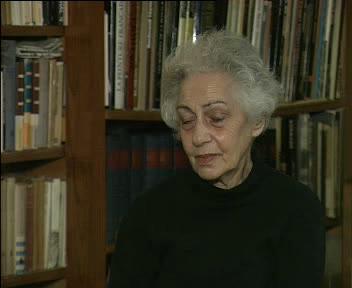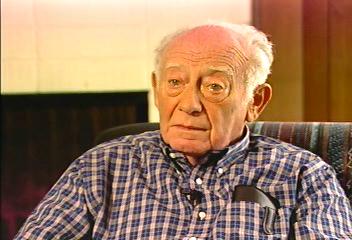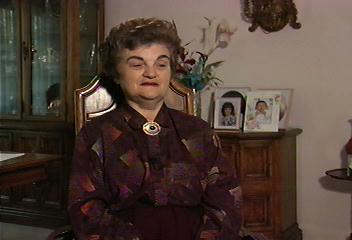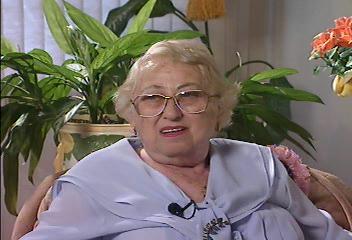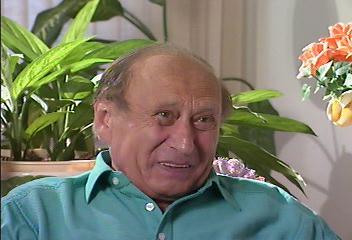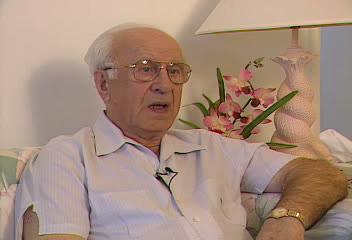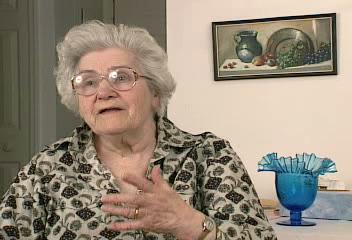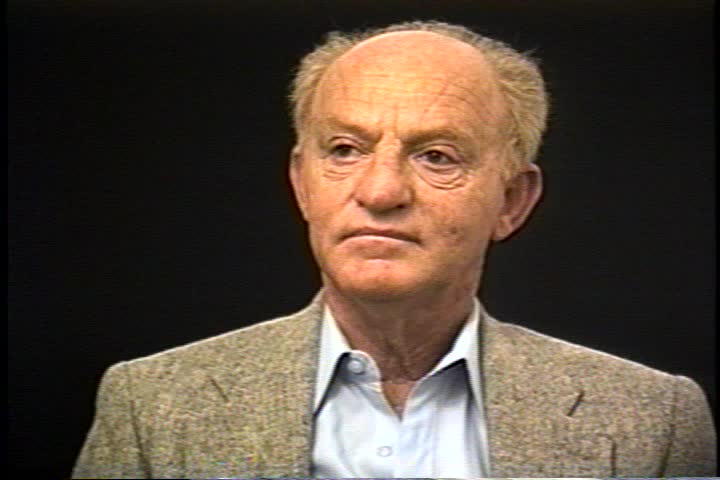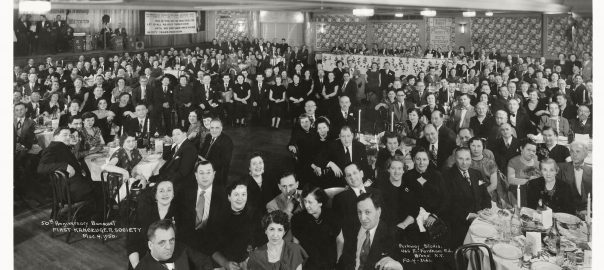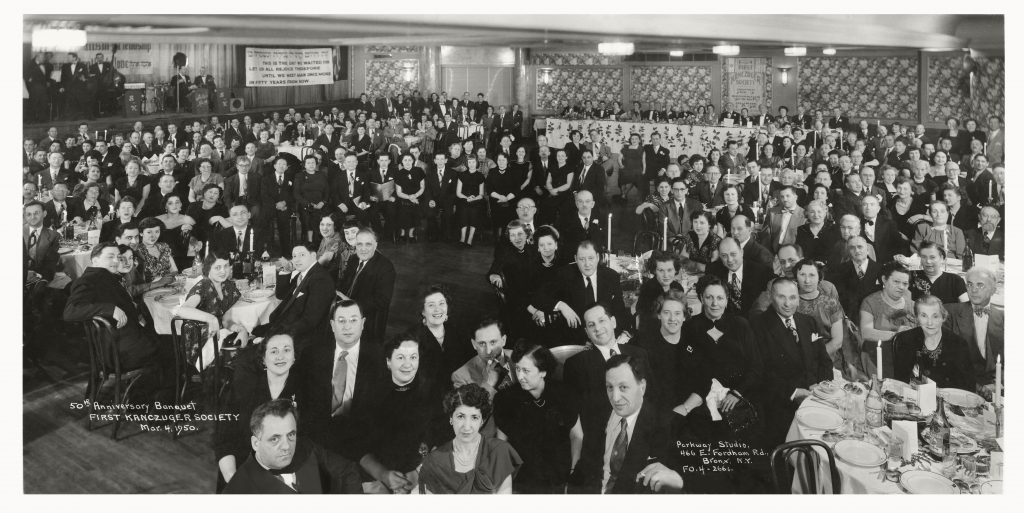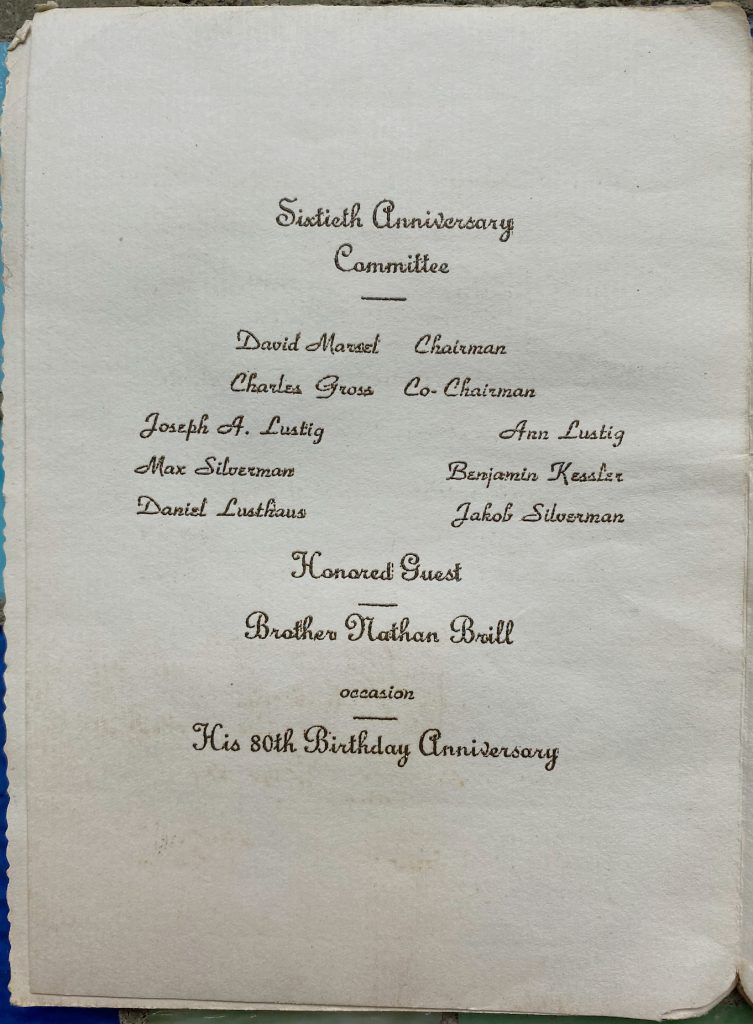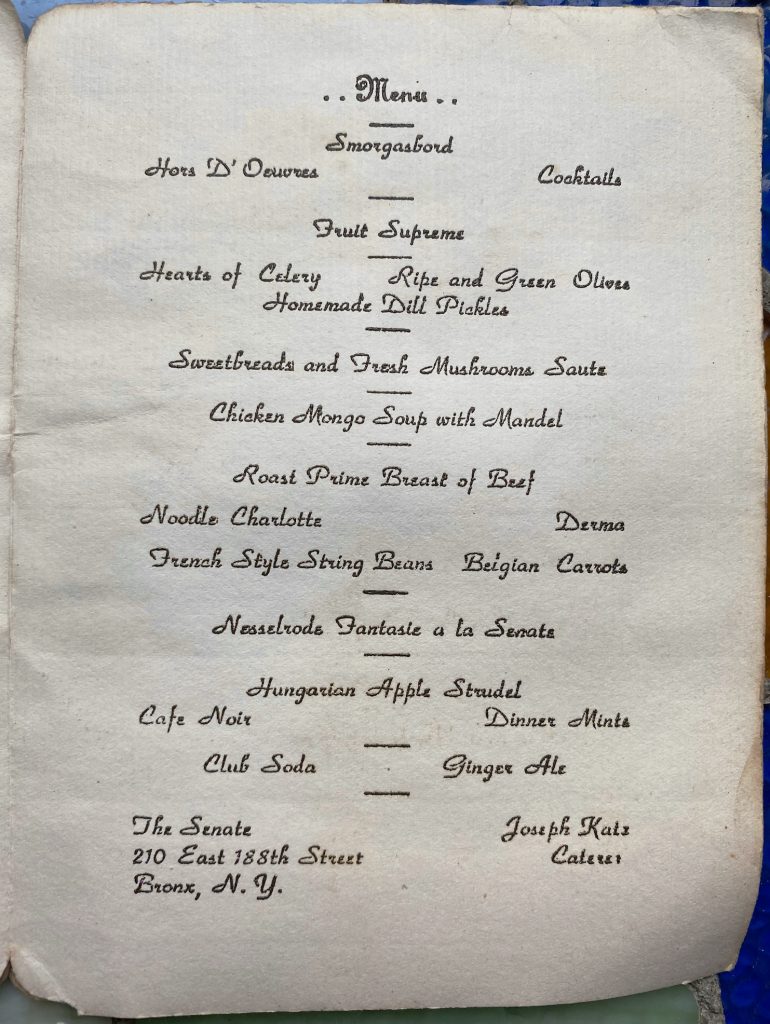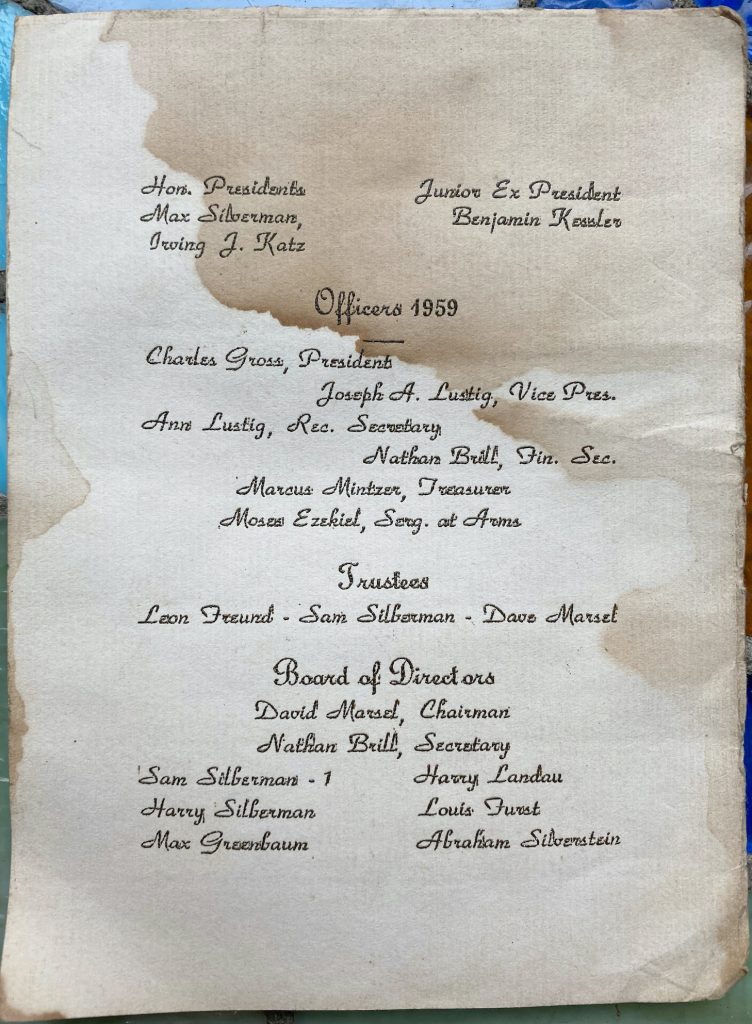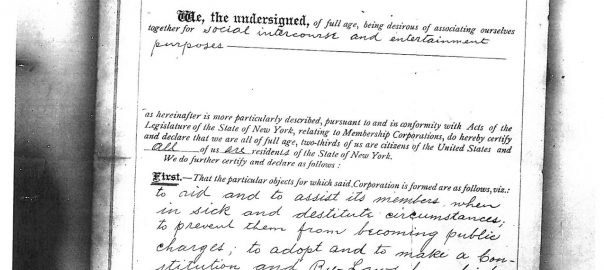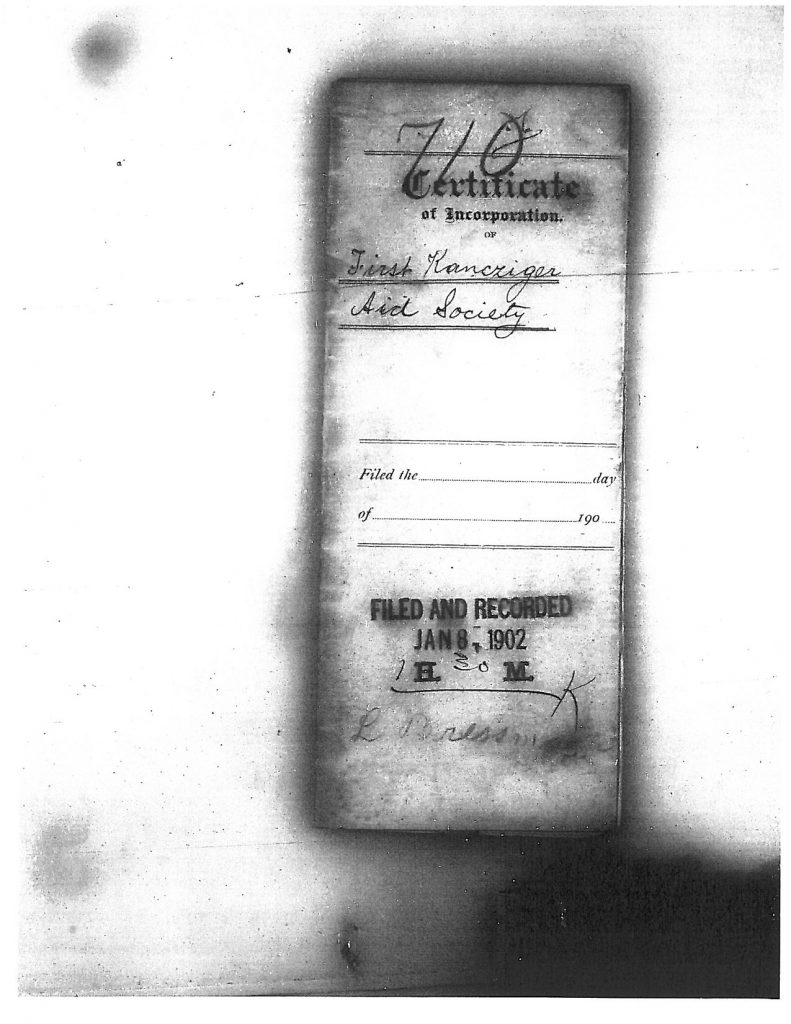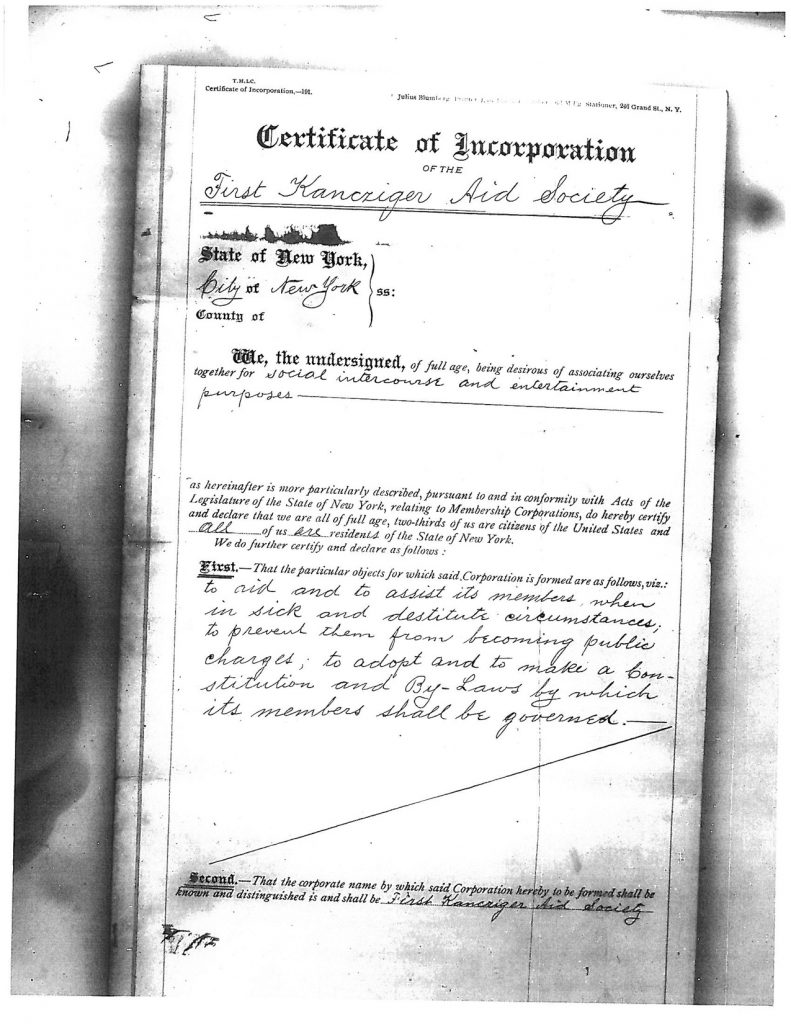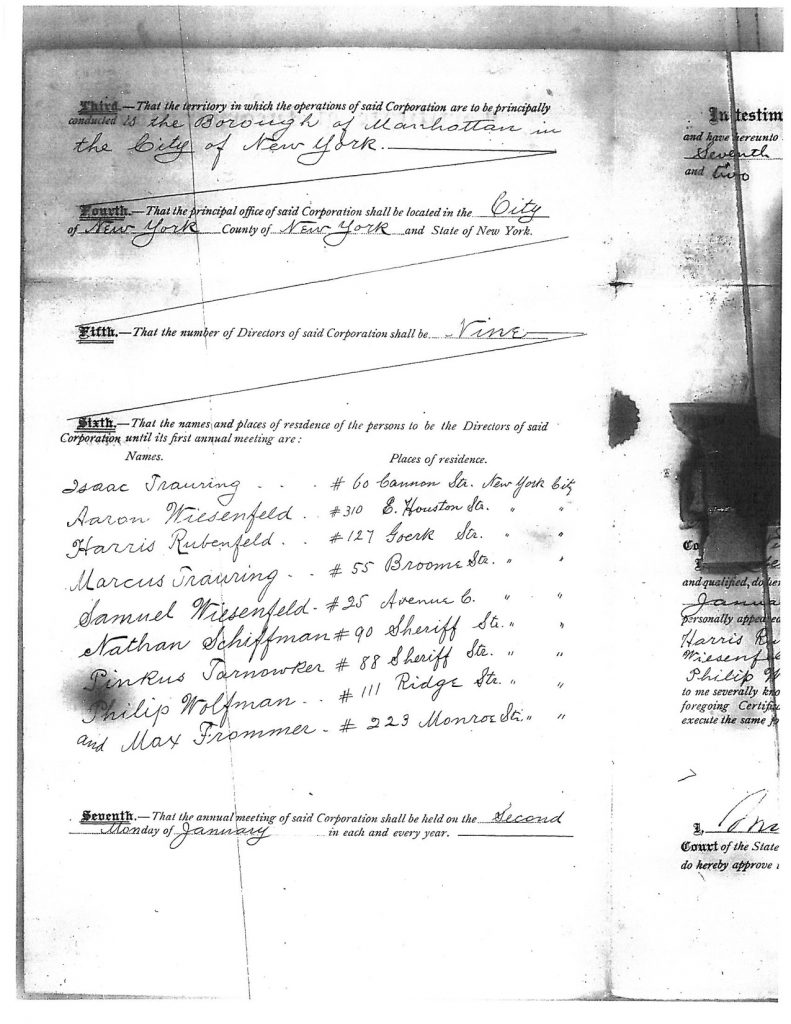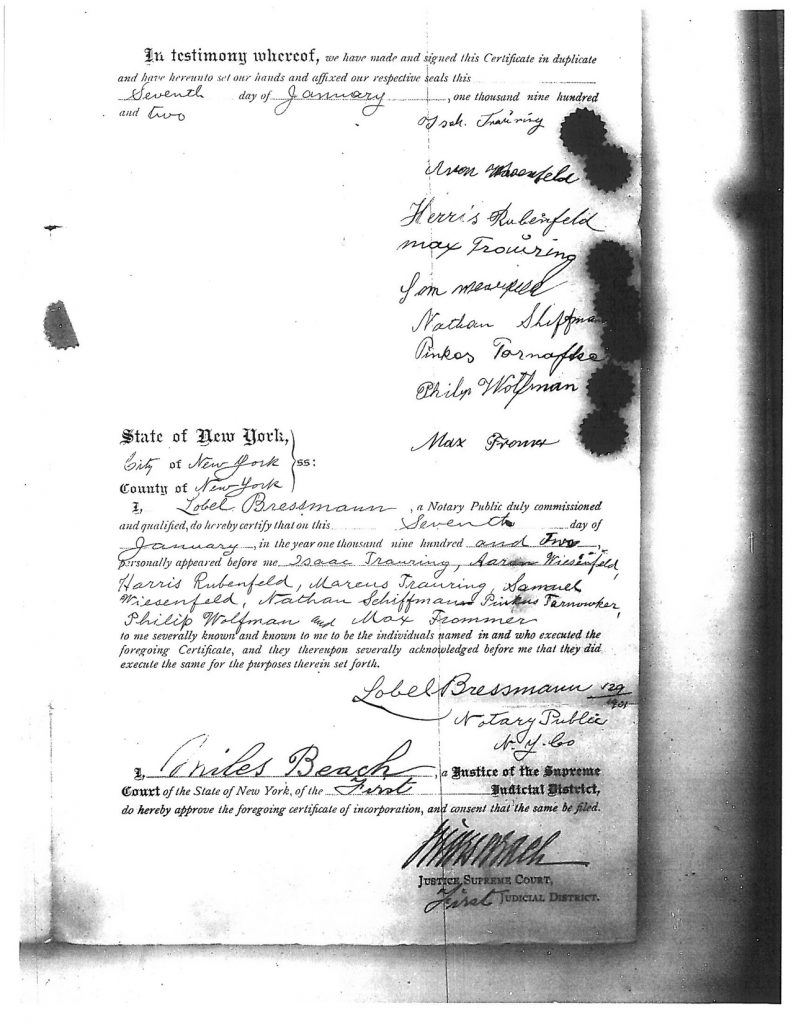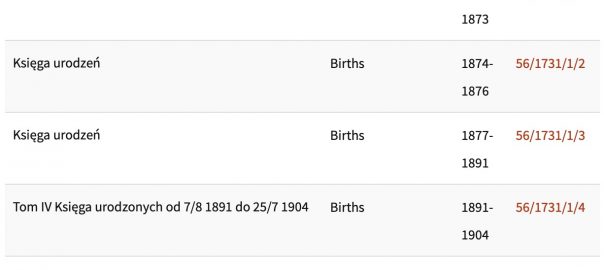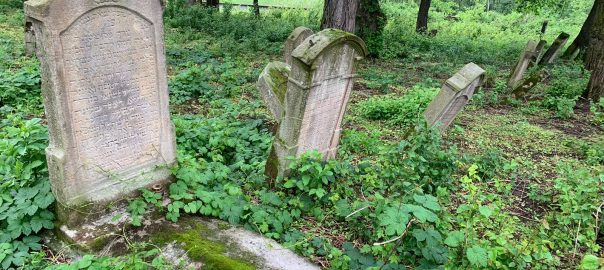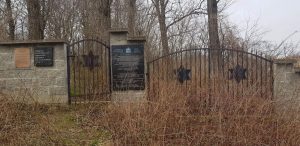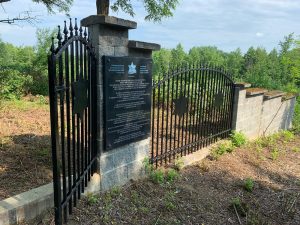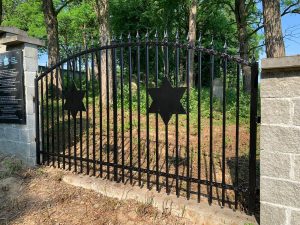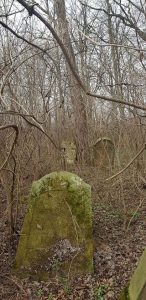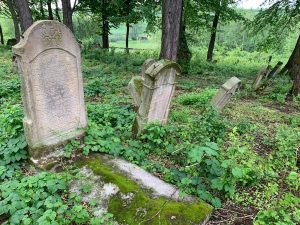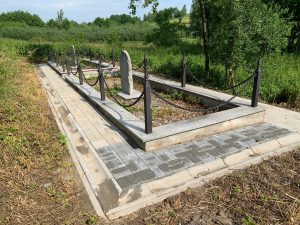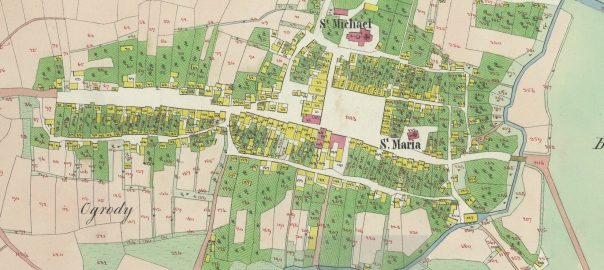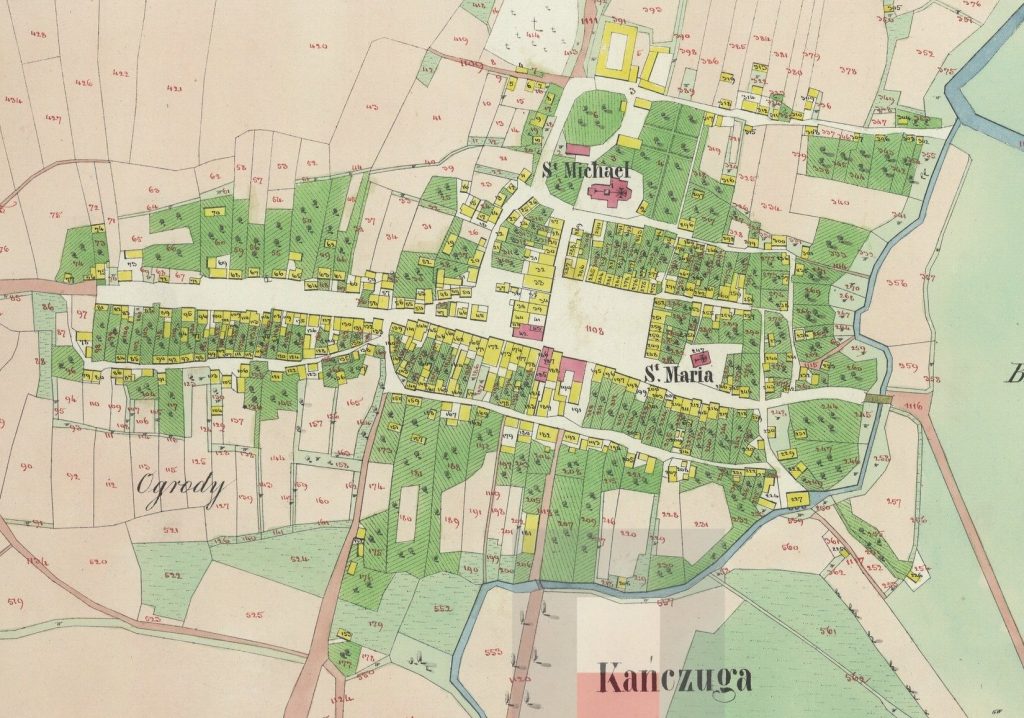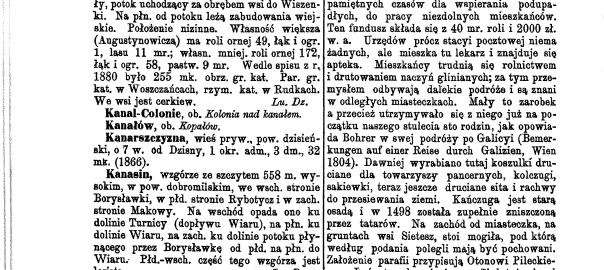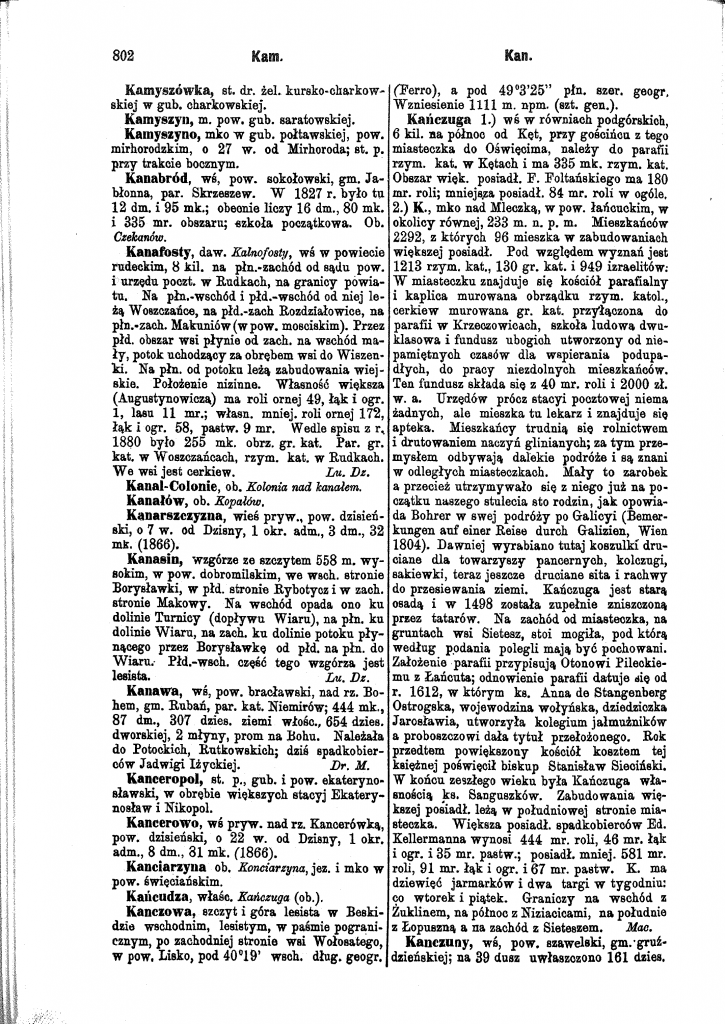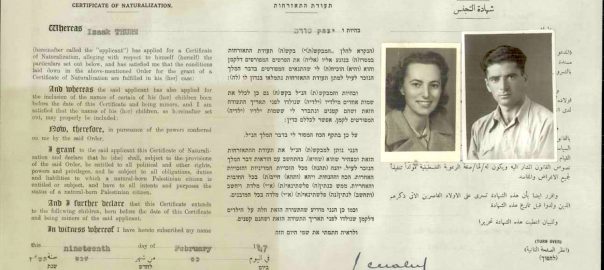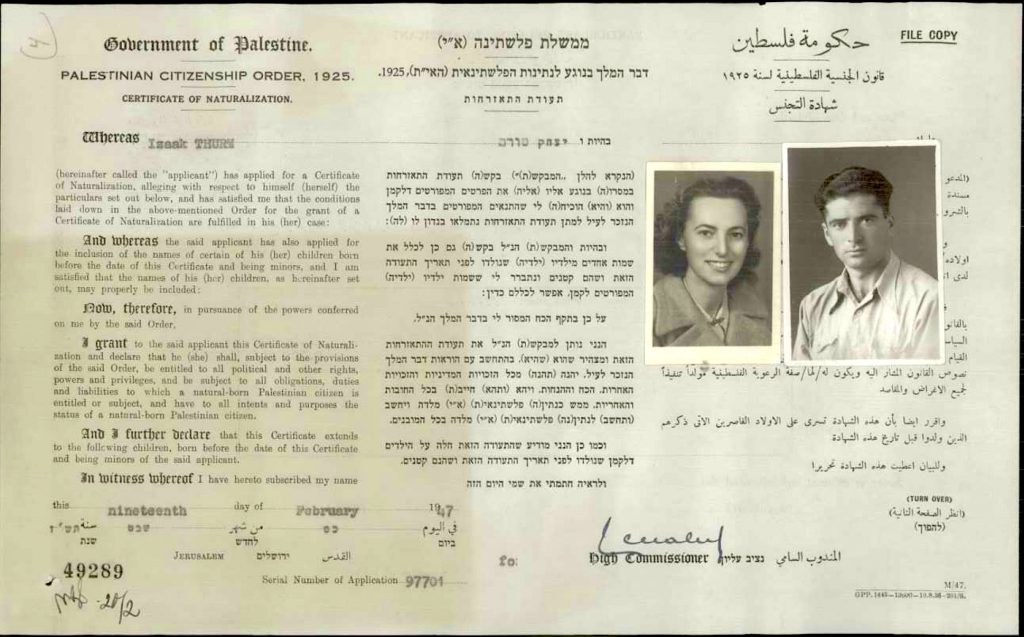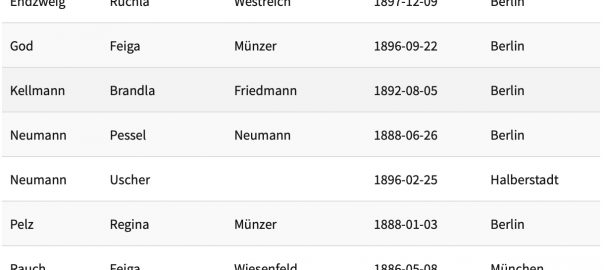A story of several lists.
During the summer of 1944 the Soviet Union made inroads into liberating Poland from Nazi occupation, which would be mostly completed on January 17, 1945 with the liberation of Warsaw. Kańczuga was probably liberated by the end of July, 1944 and surviving Jews who had lived in Kańczuga before the war started to come out of hiding and return. On January 24, 1945 a list of the Jews living in the town was drawn up. While there were nearly a thousand Jews in Kańczuga before the war, the list indicates only 35 Jews, some of which had already left the town again. Let’s call this the January List.
That number would go down, not up, as the massacre during Passover in the town would occur about two months later, which included people from this list, and any Jews who survived that night probably did not stick around much longer. The names of those killed, and subsequently buried in a mass grave, are listed in my earlier post Memorial for Jews murdered in Kańczuga in 1942 & 1945, although the list of names had at least one mistake which I discovered while putting this article together. That list was assembled at least partially from two contemporaneous lists of victims of the attack. One sent by the local militia to the Ministry of National Defense, listing seven names, and another in the testimony of Jakub Kesstecher, which lists five names. Let’s call these the Militia List and the Kesstecher List.
Another list was drawn up around July 1945 of survivors from Kańczuga. That list was submitted for publication in Israel by Aron Kramberg, who lived in Kfar Yekhezkel, but who had received the list from his brother in Katowice. The list is in Hebrew, although presumably it was originally sent in Polish. Let’s call this the Survivor List.
I found a copy of the January List in the Przemyśl archive, in a folder of records detailing the efforts to create a list of residents for the new government of Poland, which had just started under the control of the Soviet Union. Interestingly enough, there are no other lists in this folder other than the one of Jewish residents. It’s possible it was included as evidence of the fact they were not doing a very good job, as a note says they only found 14 Jewish residents, and the Jewish community had put together their own list which had 35. That said, it appears they blame the Jewish community for not coming forward to register properly, which frankly considering what they had just been through was probably understandable.
The list contains those Jews that were known to live in the gmina of Kańczuga, which also include some of the surrounding villages (see the Nearby Villages page for a list of villages nearby whose residents show up in Kańczuga records). In this list, that includes Żuklin and Ostrów. Some of the people were born elsewhere, including additionally in Zagórze (gmina Manasterz), Lelów, Przemyśl, Pantalowice (gmina Kańczuga), Łopuszka Wielka (gmina Kańczuga), and Jarosław.
There are some odd anomalies in the list. For example, many of the men on the list show birthdates that make them seem older than they actually were. Did they think their birth records didn’t survive the war? or were they just continuing to use an age that allowed them to live during the war years (if you were not old enough to work, you were killed)? Perhaps they were hoping to avoid getting drafted into the new Polish army? Note that the list is signed by Izydor Reitzfeld, although in the list itself he is called Israel Reitzfeld.
I spent some time figuring out the accuracy of the parents names listed. In most cases the surname of the father is left out. At first I thought the surname shown was that of the married parents (i.e. the father’s surname). I then recognized that many of the surnames belonged to the mothers (for example Mindla Salzman who I’ve written about before, see Tracking down a couple that disappeared during the Holocaust). One might assume that the person’s surname would match that of the father, but that isn’t always the case, especially in Galicia where many children were forced to take their mother’s surnames. In one case, #7, the addition of the father’s surname seems to point out that he had taken his mother’s surname at birth. However, assuming that the surname shown was that of the mother, and that the surname of the father matched the person (when not given as in #7) also didn’t work. Of course with some women the reason the names didn’t match was that they had married (in #14 this is specified), but this wasn’t always the reason. Researching the births of the people on the list whenever possible I tried to confirm parents’ surnames. If you see a surname in the table below that is not in the original image, then it was confirmed in the birth record index. If the name is shown in parenthesis, it is an educated guess. If there is no surname shown for the father, then an educated guess wasn’t possible and I left the name as shown in the image.
Below is the table of information transcribed and translated when necessary. I’ve also added some comments based on my research (you may need to scroll right to see my comments in the table).
| # | First Name | Surname | Date of Birth | Place of Birth | Profession | Parent's Names | Permanent Place of Residence | Comments | Philip's Comments |
|---|---|---|---|---|---|---|---|---|---|
| 1 | Juda | Ehrlich | 13 Jul 1925 | Kańczuga | buchhalter (accountant) | Dawid Erlich & Sheindla Horowitz | Kańczuga | - | |
| 2 | Jakob | Goldman | 15 May 1900 | Gać, gmina Kańczuga | rolnik (farmer) | Abraham Goldman & Lea Sigler | Kańczuga | - | |
| 3 | Beracha | Goldman | 18 Apr 1901 | Zagórze, gmina Manasterz | przy gospodarstwie (housewife) | Aron (Goldman?) & Beila Adler | Kańczuga | - | |
| 4 | Feiga | Goldman | 20 Apr 1917 | Zagórze, gmina Manasterz | hafciarka (embroiderer) | Jakob (Goldman?) & Regina Adler | Kańczuga | - | |
| 5 | Natan | Goldman | 12 Mar 1928 | Kańczuga | robotnik (laborer) | Mendel Goldman & Klara Lampel | Kańczuga | - | Actual birth year likely 1924. |
| 6 | Beila | Goldman | 11 Feb 1938 | Kańczuga | - | Jakob (Goldman?) & Beracha Adler | Kańczuga | - | |
| 7 | Pinkas | Herbstman | 13 Mar 1902 | Kańczuga | robotnik (laborer) | Josef Lampel & Freida Herbstman | Kańczuga | - | Father's name not listed on birth record. Likely parents were only married religiously, and not civilly, which would explain why he has his mother's surname. |
| 8 | Feiwel | Jakobes | 7 Jul 1907 | Kańczuga | rzeźnik (butcher, maybe shochet) | Mechel Jakobes & Aida Grundstein | Kańczuga | - | Full name on birth record is Chaim Feiwel. One of the victims of the massacre two month later. |
| 9 | Wolf | Kramberg | 8 Aug 1921 | Kańczuga | buchhalter (accountant) | Berl Kramberg & Cyrla Goldman | Kańczuga | Wyjechał kilka tygodni temu nie wymeldował się (Left few weeks ago, did not check out) | Some birth records list mother's maiden name as Schiffman. It seems likely one was her mother's maiden name, and one her father's surname. |
| 10 | Josef | Kessler | 31 Dec 1910 | Kańczuga | ślusarz (locksmith or ironsmith) | Moses Kessler & Chaja Weber | Kańczuga | - | Actual birth year likely 1912. Full name on birth record is Josef Izaak. |
| 11 | Pinia | Krieger | 31 Dec 1929 | Kańczuga | uczennica (schoolgirl) | Abraham Chaim Krieger & Chaja Sara Szafer | Kańczuga | - | One of the victims of the massacre two month later. |
| 12 | Moses | Rosenholtz | 1 Oct 1878 | Lelów | kupiec (merchant) | Chaim Rosenholtz & Chana Berkowicz | Kańczuga | - | Birth record shows full name as Moszek Aron Rozencholc. |
| 13 | Israel | Reitzfeld | 22 Feb 1910 | Kańczuga | dentysta (dentist) | Mendel Reizfeld & Amalfa? Brüll | Kańczuga | - | Birth record shows name spelled as Esriel, and mother's name as Sara Malka Brill (or Brüll). One of the victims of the massacre two month later. |
| 14 | Hania | Reitzfeld-Kreiger | 5 Sep 1925 | Kańczuga | trykociarka (knitter) | Mendel Krieger & Ita Mörsel | Kańczuga | Birth record lists name as Chana. | |
| 15 | Feiga | Rosenblüth | 19 Jun 1919 | Kańczuga | krawczyni (tailor) | Isak Rosenblüth & Beila Langsam | Kańczuga | Temporarily left to Przemyśl | Birth record shows full name as Lazar Lipa, and mother's maiden name to be Elowicz. Later known as Fay Walker. |
| 16 | Lazar | Rosenblüth | 17 May 1924 | Kańczuga | stolarz (carpenter) | Isak Rosenblüth & Beila Langsam | Kańczuga | Wyjechał kilka tygodni temu nie wymeldował się (Left few weeks ago, did not check out) | Birth record shows full name to be Feiga Ruchla, and mother's maiden name to be Elowicz. Birth year likely 1923. Later known as Leo Rosen. |
| 17 | Jakob | Rutte | 10 Jan 1924 | Kańczuga | szklarz (glazier) | Moses Rutte & Etla Landau | Kańczuga | Temporarily left to Lublin | In birth record, father's full name Moses Dawid Rutte. |
| 18 | Mindla | Salzman | 15 Jul 1886 | Kańczuga | przy gospodarstwie (housewife) | Markus Thurm & Tauba Traurig | Kańczuga | Birth record indicates actual birth year likely 1885, and father's surname Thurm. One of the victims of the massacre two month later. | |
| 19 | Genia | Silber | 28 Jul 1924 | Przemyśl | krawczyni (tailor) | Hersch & Etla Landua | Kańczuga | - | Father's name likely Chaim Hersch Goldmann. Other records show mother's maiden name as Risenbach. |
| 20 | Berl | Schiffman | 16 May 1924 | Kańczuga | rolnik (farmer) | Abraham Schiffman & Frydka Ringel | Kańczuga | Was mobilized to the army last August in Krasnystaw | Birth record shows mother's maiden name to be Fradla Ringel. |
| 21 | Berl | Zwanziger | 7 May 1919 | Kańczuga | rolnik (farmer) | Josef Zwanziger & Perla Westreich | Kańczuga | - | One of the victims of the massacre two month later. |
| 22 | Benzion | Zwanziger | 1920 | Kańczuga | rolnik (farmer) | Josef Zwanziger & Perla Westreich | Kańczuga | Left last year in unknown direction | Birth record shows full name as Benzion Isaak, and actual birth year likely 1922. |
| 23 | Josef | Walker | 27 Nov 1904 | Kańczuga | krawiec (tailor) | Wolf Walker & Rojza Frommer | Kańczuga | - | |
| 24 | Adler | Pesla | 1926 | Pantalowice, gmina Kańczuga | przy gospodarstwie (housewife) | Berl & Chava Adler (see note) | Żuklin, gmina Kańczuga | Birth record shows parents as Majer Adler and Chawa Hirschfeld. | |
| 25 | Jakob | Charytan | 7 Mar 1911 | Żuklin, gmina Kańczuga | rolnik (farmer) | Moses Charytan & Chana Nadel | Żuklin, gmina Kańczuga | - | Birth record show father's surname as Knöppel, mother's full name as Chana Sara, and birthplace as Łopuszka. |
| 26 | Hersch | Charytan | 18 Sep 1918 | Żuklin, gmina Kańczuga | rolnik (farmer) | Moses Charytan & Chana Nadel | Żuklin, gmina Kańczuga | - | Birth record shows father's surname as Knöppel, mother's full name as Chana Sara, and birthplace as Łopuszka. |
| 27 | Scheindla | Herbstman | 9 May 1908 | Łopuszka Wielka, gmina Kańczuga | przy gospodarstwie (housewife) | Moses & Chana Fenig | Żuklin, gmina Kańczuga | - | Other records show Fenig as Fenik. There is a 1908 birth record for Chaja Itta born to Henoch Eisenberg and Estera Fenik in Łopuszka. |
| 28 | Chaim | Herbstman | 25 May 1938 | Jarosław | - | Jakob & Scheindla Fenig | Żuklin, gmina Kańczuga | - | Possibly the son of #27. |
| 29 | Moses | Goldberg | 16 Jul 1909 | Kańczuga | lakiernik (varnisher) | Chaim Goldberg & Sheindla Fink | Żuklin, gmina Kańczuga | - | Actual birth year likely 1912. |
| 30 | Baruch | Sauerhaft | 1900 | Ostrów, gmina Kańczuga | rolnik (farmer) | Szaja Sauerhaft & Tauba Welc | Ostrów, gmina Kańczuga | - | Birth record shows full name as Jakob Baroch, and actual birth year likely 1901. |
| 31 | M. Josef | Sauerhaft | 24 Mar 1907 | Ostrów, gmina Kańczuga | rolnik (farmer) | Szaja Sauerhaft & Tauba Welc | Ostrów, gmina Kańczuga | - | Birth records show a Moses Joel born in 1907. |
| 32 | Abraham | Sauerhaft | 1910 | Ostrów, gmina Kańczuga | rolnik (farmer) | Szaja Sauerhaft & Tauba Welc | Ostrów, gmina Kańczuga | - | Actual birth year likely 1912. |
| 33 | Efraim | Sauerhaft | 1915 | Ostrów, gmina Kańczuga | rolnik (farmer) | Szaja Sauerhaft & Tauba Welc | Ostrów, gmina Kańczuga | - | |
| 34 | Sabina | Sauerhaft | 1917 | Ostrów, gmina Kańczuga | przy gospodarstwie (housewife) | Szaja Sauerhaft & Tauba Welc | Ostrów, gmina Kańczuga | - | Couldn't find birth record. Maybe this is the wife of one of the brothers listed, and the parent's names are incorrect. |
| 35 | Dwora | Bierman | 5 Jan 1912 | Kańczuga | krawczyni (tailor) | Aron Biermann & Estera Ryfka Rosenblüth | Kańczuga | - | Birth record shows mother's full name as Estera Rifka, and her actual birth year is likely 1911. |
Two month after the above list, the massacre during Passover occurred. The details are not so clear, but this was actually several different attacks on the same night (presumably by the same people). Attacks occurred in at least two houses on Węgierska Street (owned by the Krieger family), and in a house on Św. Barbary Street. A week after the attack the local militia sent the following note to the Ministry of National Defense:
Dnia 31.3.1945 r. w godz. 20-30 około 10-15 nieznanych sprawców uzbrojonych w automaty i karabiny oraz pistolety dokonało napadu rabunkowego i morderstwa w Kańczudze na obywatelach polskich pochodzenia żydowskiego. Zabici zostali Eizig Izrael lat 35, żona jego Krieger Chana lat 20, Krieger Sima lat 16, Zwanziger Berek lat 26, Salzman Mindla lat 55, Bergman Dojra lat 32, Jakubes Feiwel lat 33, wszyscy z Kańczugi. Sprawcy po dokonaniu czynu zbiegli w nieustalonym kierunku. Dochodzenie w tej sprawie prowadzi posterunek MO w Kańczudze oraz Ref. Śledczy w Przeworsku.
Roughly translated, it says: On March 31, 1945 about 10-15 unknown armed perpetrators committeed robbery and murder in Kańczuga of Polish citizen of Jewish origin.
Eizig Israel, 35, was killed,
his wife Krieger Chana, 20,
Krieger Sima, 16,
Zwanziger Berek, 26,
Salzman Mindla, 55,
Bergman Dojra, 32,
Jakubes Feiwel, 33,
all from Kańczuga.
The perpetrators fled in an unknown direction. Investigations in this matter are being carried out by the MO police station in Kańczuga and an investigator in Przeworsk.
A few months following that report, a survivor named Jakub Kesstecher gave testimony that was written down in while he was a refugee in Bucharest. He described several crimes he witnessed, but ended his testimony with the following:
Ze znanych i pozostałych przy życiu osób pamiętam następujące nazwiska:
KESSLER Jozef,
ZWANCYGIER Benzion,
KRAMBERG Wolf, ?Józef Chaskiel,
GOLDBERG Mozes,
GOLDMAN Jakób,
CHANITAN Henek,
CHANITAN Jakob,
Następujące osoby pozostałe przy życiu po wkroczeniu Sowietów, zestały zabite przez AK:
………
Jakobis Reiwel,
Reizfeld Azri,
Eisman Debora,
Kreiser Hanka,
………
Salzman Mindla.
He starts by listing the names of known survivors. It’s not clear if he only heard these people survived, or if he saw all of these people. CHANITAN seems to be a typo for CHARYTAN. Note that in the January List there are two Charytans – Hersch and Jakob. Henek is a known nickname for Hersch. Therefore, all of those he listed are in the January List.
He then states, rather bluntly, that the following survivors after the Soviet invasion were killed by the Home Army. In the list there are those sections with periods, which might indicate he couldn’t remember two names, or may not have a meaning.
A few things to point out about the Kesstecher List. It seems clear that Jakobis Reiwel is a typo, and the first name is Feiwel. You may have noticed that Feiwel Jakobes shows up in the January List, and Feiwel Jakubes shows up in the Militia List. Similarly Kreiser Hanka is likely Hanka (Chana) Krieger. Azri Reizfeld is the same Israel/Izydor Reitzfeld in the January List. It’s worth pointing out that there is a lot of overlap between the Militia List and the Kesstecher List, yet Izydor Reitzfeld doesn’t seem to show up in the Militia List. Except he does. It hit me while reviewing these lists that in the January List, Israel Reitzfeld is listed right above Chana Reitzfeld, and it indicated her maiden name was Krieger. It doesn’t say the two are married, but it’s likely. If you look back at the Militia List, however, you’ll notice that it says Izrael Eizig, 35, was married to Chana Krieger. Israel Reitzfeld, as shown in the January List, was born in 1910. That would make him 35 at the time of the killing. Therefore it’s very clear that Izrael Eizig is a mistake and is actually Izydor/Israel/Arzi Reitzfeld. Now you might realize that all of the names and on the Militia List and the Kesstecher List match up except one, Debora Eisman. I can’t be sure about this one, but since all of the names have otherwise been on the January List I looked at the list and there’s only one Debora – Dwora Bierman. Could they be one and the same? There seem to be enough typos in that list to make it possible. It’s actually not that far off, just one different letter and one missing letter.
Lastly, Mindla Salzman, who amazingly shows up exactly the same in all of these lists, used the married name Salzman only when she moved to Germany after getting married. Before that, she needed to use what I can only guess was her husband’s mother’s maiden name, a common occurrence in Galicia. Before she moved to Germany, her married name was Kesstecher. So maybe Mindla’s husband, Aron Kesstecher-Salzman, was a relative of Jakub Kesstecher. For a story of Mindla and Aron Kesstecher-Salzman, see Tracking down a couple that disappeared during the Holocaust.
The Survivor List was probably compiled in July 1945, but wasn’t published until March 1946. The list was published in a newspaper put out by the Jewish Agency called לקרוב ולרחוק (LaKarov uLeRahok) which was put out between June 1945 and August 1947, totaling 74 issues. Each issue, usually 8 pages, contained a variety of lists collected from many places. Most of the lists were either lists of survivors found in Europe, or were lists of requests submitted to the Jewish Agency for information on a relative or friend. The Jewish Agency started the Search Bureau for Missing Relatives (in Hebrew, המדור לחיפוש קרובים) in 1945 after the war ended, and started publishing lists in local Israeli newspapers before starting to publish their own newspaper to handle the demand.
On March 24, 1946, issue 37 was published with a small list on the front page related to Kańczuga. This is the only list related to Kańczuga that was published by the newspaper. While the list itself doesn’t indicate when it was created, an index of the first 50 issues put out by the Jewish Agency lists the creation date as July, 1945, some eight months before it was published. The list was submitted by Aron Kramberg, living at the time in Kfar Yehezkel, a small village near Afula in what was then British Mandate Palestine, and now is Israel. The list is described as a list of survivors from Kańczuga, and it says the list was sent to Aron by his brother in Katowice (Poland). It’s very likely that this brother was Wolf Kramberg, who is on the January List. Since we know Wolf Kramberg was in Kanczuga some months earlier, and from birth records can confirm Aron and Wolf were brothers, it makes sense that Wolf Kramberg was the creator of this list.
Below is the list transcribed in the original Hebrew, with the English versions of the names added. On the far left I’ve added an asterisk if one or more of the names listed is also in the original list above. About half of the 24 names in this list are also present on the original list.
| In both | English Given Name(s) | English SURNAME | Hebrew Surname | hebrew given name(s) |
|---|---|---|---|---|
| * | Jehuda | Erlich | אֵרליך | יהודה |
| Jehezkel | Bader | בּאדר | יחזקאל | |
| Machla | Basowicz | באסוביץ | מכלה | |
| * | Moses | Goldberg | גולדבּאֵרג | משה |
| * | Jakób, Meir, and Natan | Goldman | גילדמאן | יעקב, מאיר, ונתן |
| * | Josef | Walker | ואלקר | יוסף |
| Sinka | Weltz-Goldman | ואֵלץ–גולדמאן | סיאנקה | |
| Osias | Westreich | ואֵסטרייך | אוסיאש | |
| * | Genia | Silber | זילבּאֵר | גאֵניה |
| * | Hersch, Jakób, and Mania | Charytan | חאריטאן | האֵרש, יעקב, ומאניה |
| David | Thurm | טוּרם | דויד | |
| Hersch | Jacobs | יעקבּס | האֵרש | |
| Pinchas | Lampel | לאמפל | פנחס | |
| * | Benzion | Zwanziger | צבאנציגר | בן–ציון |
| * | Josef | Kessler | קאֵסלר | יוסף |
| Jakób | Kesstecher | קאֵסטאֵכאֵר | יעקב | |
| * | Fela (Fay) and Eliezer (Lazar) | Rosenbluth | רוזנבליט | פאֵלה ואליעזר |
| * | Moses | Rosenholtz | רוזנהולץ | משה |
| * | Benek, Haya, and Hudzia | Schiffman | שיפמאן | באֵנאֵק, חיה, והוּדזיה |
| Benzion | Stolzer | שטולצאֵר | בן–ציון |
Some notes on the above list. It’s worth comparing it as a list of known survivors to those listed by Jakub Kesstecher a few months earlier. Notably Wolf Kramberg is on Kesstecher’s list and Jakob Kesstecher is on Kramberg’s list. Everyone on Kesstecher’s list of survivors (other than Kramberg himself) is actually on the Survivor List. Others from the January List are also present on the Survivor List that were not on the Kesstecher List.
One other note of interest is the Fela and Elizer Rosenbluth. In Hebrew is clearly says Fela, which was probably a diminutive, but it’s also the same name that shows up in her two written testimonies (see Kańczuga Holocaust survivor testimonies). Also, her brother’s name is given as Eliezer, even though the January list lists him as Lazar (a diminutive of Eliezer) and was later known as Leo. In Hebrew their surname looks like Rosenblit, not Rosenbluth, which might be confusing if we didn’t already see their names elsewhere. They’re also siblings, not a couple, which you might think looking at such as list.
This is the story of the post-liberation Kańczuga Jewish community, told using four lists all created in 1945. Are you related to anyone on these lists? Please tell more of their stories in the comments below.
If you know of more lists or testimonies from this period, please share them so we can all learn from them.
Specials thanks to Łukasz Biedka and Patryk Czerwony. Łukasz provided several documents, including Kesstecher’s testimony and the article that contained the militia letter. Patryk helped translate parts of the January list.

